Last weekend, I visited Alekos once again in Vathi (say 'VA-thee), a widely spread village built at the foothills of the Selino plains, set in what looks like a green crater dug out of the ground in which houses have sprouted. Vathi forms a part of a region known as Selino, in the south-east of Crete. Folklore relates that people from Selino like to pick up and throw stones around; the joke still exists: "What are you doing with that rock? Are you from Selino?"
The village is deeply set in the gap between the road and the hills, hence its name, Vathi, meaning 'depth', which isn't necessarily the reason it was given this name, although it makes it easier to remember when I pass the village on my way to indisputably one of the best beaches in the province of Hania, Elafonisi. On this visit, the first thing I noticed at the entrance to the village was the large rocks set at a vantage point overlooking a canyon, from where the area could be viewed, creating a relaxed atmosphere from where the canyon below can be viewed, a gutting chasm making its way linearly towards the Selino mountain range.
As I drove down the main road, Vathi looked large and well-organised, with a community centre and ornate village square. In the past, this was probably the case, with Vathi thriving as an oil-producing region. Before the advent of tourism, Elafonisi was simply the place where the sheep were taken for a saltwater bath, and for the shepherd lads who led them there to cool off naked in the cool crystal waters. Vathi remains the closest main centre before Elafonisi, but this is now its only attraction, as it has taken the same direction as other agricultural centres, silently suffering the fate of rural decline; apart from seasonal labour in the fields and the tourist sector, the only other thriving industry is the restoration of the old houses in the village and its environs.
Vathi once housed over a hundred children in the now defunct village school house; today, there are about forty permanent residents in the village, all too old to lead animals to graze in the sparse pastures. This is now done with the help of 4x4 pick-up trucks, by the few able-bodied young men leftin the population. Economic migrants have moved into the village; the exodus of the young has left behind an ageing community which now requires the help of their offspring to care for them and the properties. Young laughter is still heard in the village as the population fluctuates according to the season.
In the summer, there can be up to 200 people, including the grandchildren of some of the residents, enjoying the tranquility of the village, broken by the whipping wind (the south coast of Crete is famous for it) rushing through the trees, giving them a permanent wave in their trunks. Many of the hosues are kept as country cottages. In the summer, there is also a steady stream of traffic from Hania making its way down to Elafonisi - and then back to Hania again in the late afternoon just before the sun goes down. The winter is a quiet period, when the locals ply the roads with their pick-up trucks, gathering olives for oil production and changing grazing locations for their cattle. The days are short and dark, the streets lights few, the evenings long.
Rock and stone take on a prominent appearance on the hillsides. Seen from the main road before approaching Vathi, the mountains are littered with rocks, ending in the rock-filled ravine that run parallel to the road, which itself was carved out of jagged rocky hills. The grey crags jut out of lush green foliage which covers the mountains. This rocky appearance reaches a climax at Vathi's official starting points, both the north and the south, indicated by the sign bearing its place name. The remains of old rock constructions are visible in the fields: the mountainside was once bordered by stone fences forming terraces to facilitate in the cultivation of crops. The owners of the olive groves and crop terraces marked the borders with stone fencing. In some cases, the crops have disappeared; only the rocks remain.
The architecture of Vathi clearly attests to a long relationship with rock and stone. The first of its houses have rocks of different shapes and textures in their construction, sturdy looking walls held together with the earliest form of mortar available to the local residents, a dark-coloured mud mixture, eroded over the years, but not to a point where it has led to the collapse of the wall itself. Roofless stone houses abound in Vathi: the wooden roofs are missing, but the walls remain. During WW2, the village was burnt by the Germans during the Nazi occupation of Crete in revenge for the deaths of German soldiers. After the war, the residents made their way to the centre, the mainland, or even further afield, to another country, leaving behind the scraps that remained of their houses.
The arrival of economic migrants has helped the village to maintain Vathi's role in both the tourist and agricultural sectors. The olives are picked and gathered by them when the locals are unable to do it themselves. Many people whose family roots lie in the village but do not themselves live there use their services, as this is the only way to maintain their land and property. When there are no inhabitants in the stone houses of Vathi, they suffer the same fate as the village, subjected to the elements without a caring hand to wipe away the dust that seeps through the nooks and crannies of the stone walls, or someone to lay a coat of paint over the windbeaten doors and windows. They have helped in their own unique way to keep the village alive with their labour on the fields and in the renovation of the houses. Apart from Elafonisi, the monastery of Hrisoskalitissa, also found on the same route, attracts pilgrims and tourists alike throughout the year, culminating in the festival on 15 August of the Dormition (Assumption) of the Virgin Mary.
Stone work is evident in all the new structures, in an attempt to keep in line with the landscape of Vathi and its surroundings, for the sake of tradition. The roughshod has given way to more symmetrical callisthetic designs for ornamental purposes rather than the purpose built walls from which these new structures derive: smooth round rocks of uniform size adorn the war memorial in the town's square, where the trees and flower beds have been sectioned off with more stonework. New fences and walls mirror the designs of the forefathers of the people of Vathi, without altering the original patterns and colours.
The functional element of rock has never been overlooked. The old olive processing plant may be past its functional use, but it is still standing, despite the cruelty inflicted on it by the elements and the ravages of time. The doors have long gone, as if sending out a message that the olive oil factory does not welcome people through them any longer. Apart from the reservoir, only the original grinding stones remain of the equipment that was once used to produce cold-pressed olive oil. Perhaps they were too old to be lifted and transported to a museum...
Rocks unearthed from current excavation work are used in the construction of foundations. The coastal area of Elafonisi was never inhabited by a permanent community in former times, as there had never been an adequate water supply running to this point on the island. With the modern road network extended, irrigation pipes have also been laid, allowing hotels and restaurants to ply their trade during the summer months, while in the winter months, hothouse vegetables are grown in the newly-erected greenhouses, the foundations of which are built on the rocks that are unearthed when the land is shifted to make way for their construction.
Where did all these rocks come from? Legend has it that when God was shaping the world, he was left with just a few stones. He scooped them up from the ground and threw them into the air. A few piled up one on top of the other (mainland Greece), while the remaining scattered here and there (and her islands). A more difficult question to answer is how they got to their final destination, as part of the walls of the oldest houses in the village at a time when cars and transport facilities were virtually non-existent. Beasts of burden were once the main form of transport, carrying everything from sacks of olives, fruit and produce, and building materials, primarily those rocks that needed to be disposed of from the cultivated land, to be turned into sturdy shelters for the inhabitants of what was once a thriving rural area. I did actually see a donkey tied up outside a taverna in the area, but it was difficult to work out whether the animal was being used as a tourist gimmick, or kept by a farmer who hasn't learnt to drive a 4X4.
Stonework is an essential element in the building of a new church. The rocks aren't hard to locate, as the whole area of made up of rocky hills. find; they are even left on the side of the road near the collection bin if too many were gathered for a recent building project, as if calling out to the passers-by: "free to a good home."
A good time to collect the best pieces would probably be in the summer when the river runs dry and exposes the most glittering examples of stone that it carried in its embrace during the rainy season.
After Vathi, the only other village before the monastery and the coast is Plokamiana. The landscape then becomes deserted, save the sheep and the more adventurous goats that clamber over the rocks, making it look like a simple jig.
The scenery gives way to more rock and stone, into which roads have been carved to cater for the growing tourism in the region given its proximity to Elafonisi, a revival point for the whole area, indisputably the best beach in the province, the perfect place to soothe your parched skin and dry eyes after the beating they will have suffered from the clouds of dust created by the river of traffic all making its way to the same nature spot. With the improved road system, the interest shown by retired Northern Europeans in buying Mediterranean property, and the conglomerates searching for new commercial ventures without considering the costs incurred to nature, maybe a new village is waiting to emerge from within the crevices of these rocky hills...
Despite the parched arid appearance of the area, the soil in Vathi is very fertile. My friend Aleko has all manner of fruit trees growing around his property. My favorite is the cactus plant, which grows side by side with a flax bush; water-bearing pachyderms do well in dry environments. Papoutsosika (παπουτσόσυκα) - prickly pears, cactus figs - also known as frangosika (φραγκόσυκα) may look unappealing when seen on the cactus, covered in thorns, but if you know how to gather and peel them without getting stung, they are better than ice-cream on a hot day at the tail-end of summer, which is when they are ripe. They start off as a prickly green bud, turning orange during the summer, but they won't actually be ripe until the end of August. To cut them off the tree, I stick a fork in the thick leaf and cut away the heavy part drooping with fruit with the knife in my other hand. I throw them as is into a bag without laying a finger on them; the thorns may look fine and as wispy as hair, but their sting is sharp and they cannot be seen easily in the skin, so that they become difficult to remove. This is important to remember when cleaning them at home.
Before peeling them, wash them in the sink; this removes most of the thorns. Again using a knife and fork, peel away the skin, which does actually come off easily, like a banana skin. Fridge cooled cactus figs should be mentioned in a list of the world's most exotic food, something (along with sea urchins) that one should endeavour to savour before they depart from the world, hopefull well before their dieatary needs do not need artificial support , as prockly pears contain hard black seeds which do not break down easily in the digestive system. Either they clog you up or keep you going frequently...
If you're interested in edible ways to use the cactus leaf that the fruit sits on, there are creative recipes that you can try; apparently the Mexicans use it (thorns removed). Laurene has given me a few ideas you may want to try out: In Mexican, they are called nopalitos. They can be used in a salad or as an appetiser.
This post is dedicated to my loyal friends in Vathi, Alekos, his wife Eurydice and their children Ruby and Anthony.
This is my entry for Kalyn's Weekend Herb Blogging hosted this week by Gretchen from Canela & Comino.
©All Rights Reserved/Organically cooked. No part of this blog may be reproduced and/or copied by any means without prior consent from Maria Verivaki.
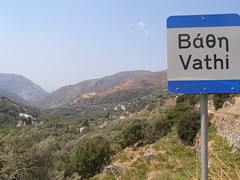

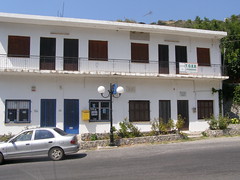

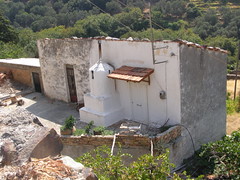
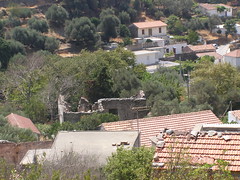
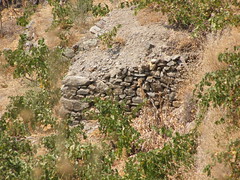
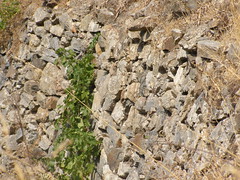

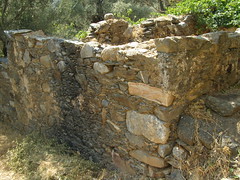
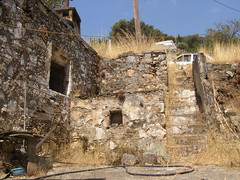
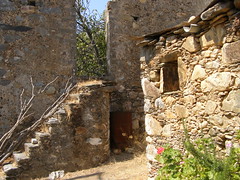
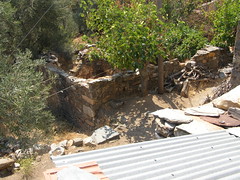
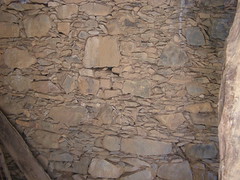
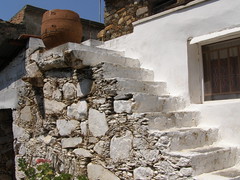
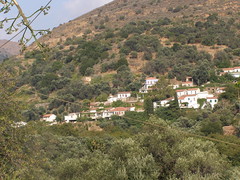
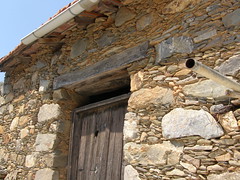

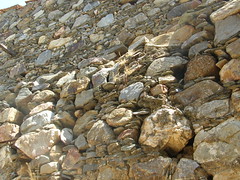
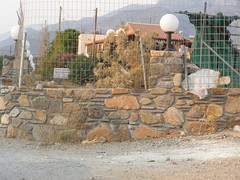
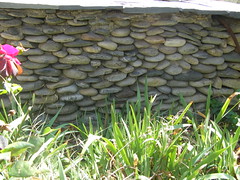
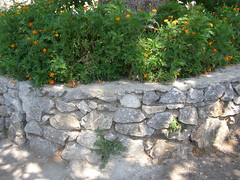
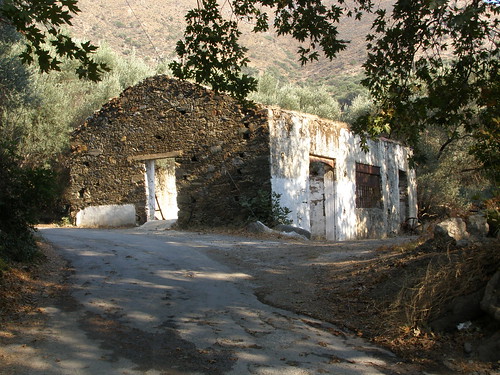
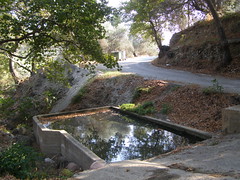


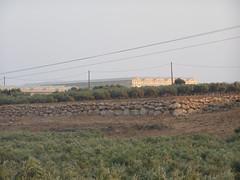
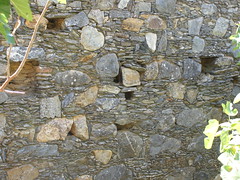
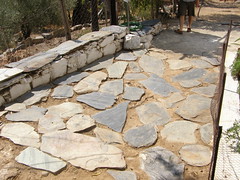

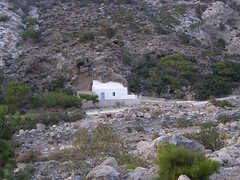
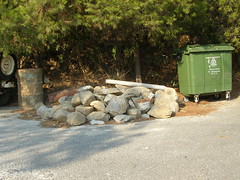


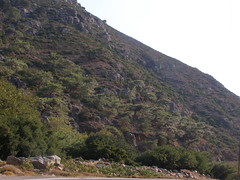
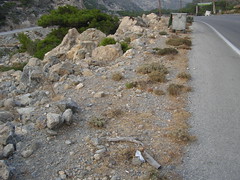
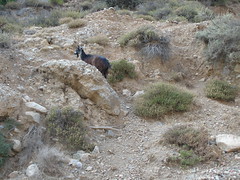


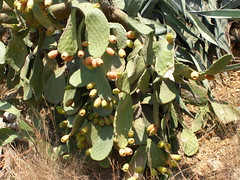
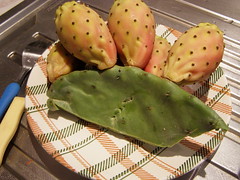
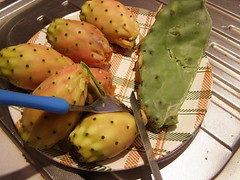

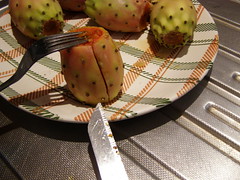
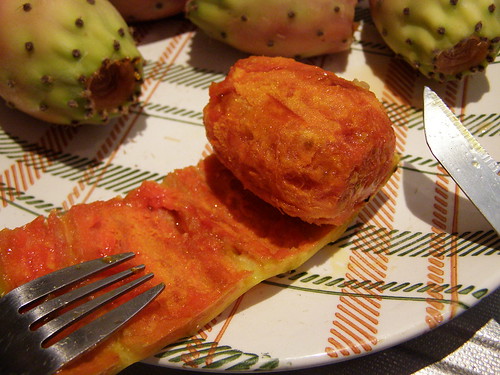
So interesting! I love the stone structures with different sizes and shapes of stones in them. And although eating prickly pear is not foreign to me, and it is done around where I live, I have never seen HOW it is done. We can just buy it in the store, but I really knew nothing about it. There's a wealth of food outside right now!
ReplyDeleteIn Mexico, those fruits are called "tunas" and are much loved. The actual green cactus paddle is also cleaned of its sharp stickers, cut into strips, & washed several times to remove some of the viscous fluid that comes out of it. It is then boiled or cooked & used in salads & stews. I've never been much of a fan of them, but my ex-husband came from an arid region in Mexico where they ate a lot of them. Do they eat the actual cactus in Greece also? I could send you a recipe if you want to try it. :)
ReplyDeleteWhat beautiful photos and descriptions! You've really brought the place alive!
ReplyDeleteI always feel like I've just visited Greece after reading your posts. I love to read them over and over, as they are so full of fascinating information! I love looking at the landscape; it's so diverse and beautiful. And those photos of all the rock walls and building! Magnificent! As soon as I saw them, I wondered who built them and how hard their task must have been. It's sad that some of the village populations are dwindling. The older I get, the more I long for a quieter lifestyle away from the big city. You've done a great job here of capturing the feel of these areas. The photos are, as usual, wonderful.
ReplyDeleteI've not had either urchin or those cactus fruits. You are brave to take on those thorns! Love their beautiful color!
We call them 'fragosuka' in mainland Greece. Nice to see they come by other names too. I just love them!
ReplyDeleteI always love your pictures and stories.
ReplyDeleteJust wanted to leave a quick comment saying that I am loving your photos. I love all the rocks!
ReplyDeleteLike Paula, I always read your posts several times; you give so much information that I like to digest and then reread.
Hence, am going now to reread...:-)
I've always been attracted to the old stone structures here as well. I was taking a picture of an old stone house once and an old man asked me why...he said that it was old and needed to be torn down. I just turned and told him that I thought it was beautiful. This was yet again, a wonderful post. I love the pictures too.
ReplyDeleteFrom what I read there are a lot of little villages in Crete suffering the same fate. Certainly the small villages on the road from Hora to Plakias seem like there is not much going on at all in them. Maybe that is just my perception?
ReplyDeleteThat prickly pear looks very tasty indeed.
What is the weather like in autumn in Crete?
I feel as though I have just been on a vacation without leaving my house. Thank you so much for your wonderful stories with pictures.
ReplyDeleteJust wonderful. Bravo Maria.
ReplyDeleteHey, thanks for the "buzz", it was really an interesting read.
ReplyDeleteWhere i come from we also eat Φραγκόσυκα, i used to eat them a lot but lately they have lost their appeal to my apetite :-D
Two things off the top of my mind: As a traveling post it would be great to include a google map link showing where exactly is the place you visited (In case we want to go ourselves :-) ). The other thing is that you can not really tell, in English, if it is Βαθύ or Βάθυ :-) both of which are possible in Crete. One way to describe it would be vAthi or vathI :-)...anyway....
The stonework on the houses and church is excellent! The Sun has not lost any of its summer strength as i can see...it's pouring in sweet and warm from everywhere...lovely colours.
All the best
AA
This was on the Omnivore Hundred which was something I hadn't yet to try. My daughter reminded me though that when we fiorst arrived on Santorini we sat in a small outdoor restaurant and shared a cactus juice which was $20 Euro...good thing we did not get 2:D
ReplyDeleteThanks so much for sharing all about cactus figs. These are very common in the mountains of Peru and are known as "tuna." I have enjoyed them many times. Thanks for participating in WHB this week!
ReplyDeleteIt sounds like a very fascinating place. I knew that the "cactus figs" were edible, but I've never seen before how they're eaten. Very interesting post.
ReplyDeletevery interesting! I can see so many similarities with the Lebanese villages with different architecture but similar use of stones
ReplyDelete